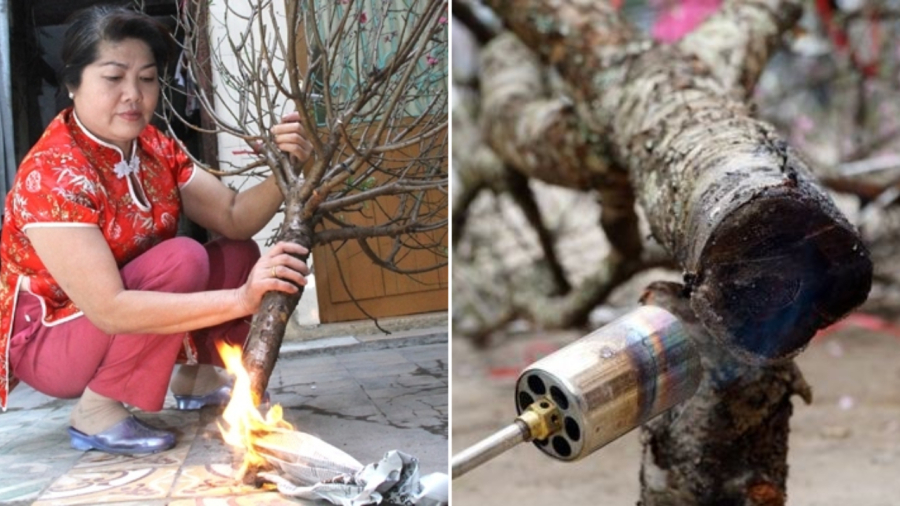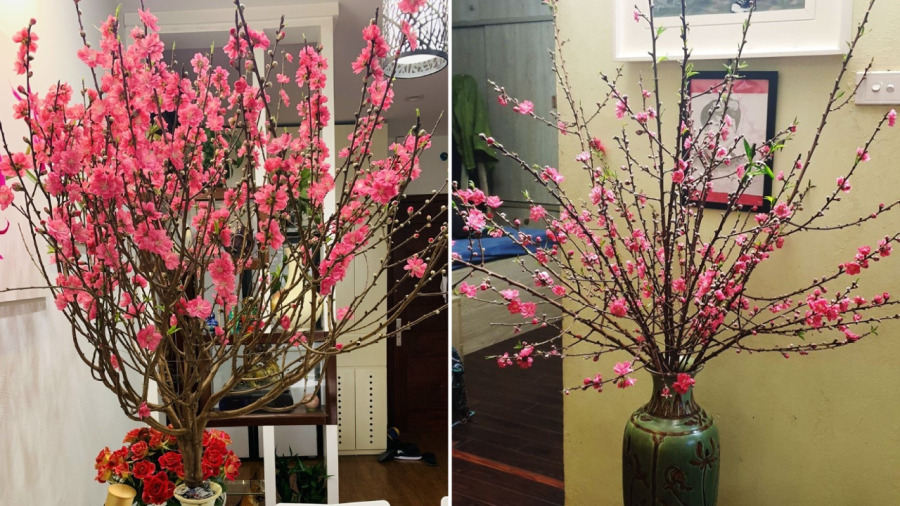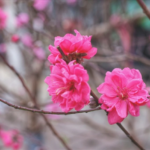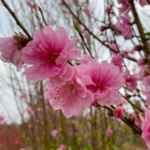Should you burn the peach root?
Tết holiday is the time when people buy peach branches to display in their homes. From the beginning of the Lunar month, peach branches are brought to the market to serve the demand for decorative flowers and for worship.
Many people, when buying peach branches, will quickly burn the root part with the purpose of helping the peach blossom beautifully and last longer. In fact, this will not have that effect.
According to peach garden owners in Nhat Tan, Hanoi, when burned with fire, the peach root will be burnt and lose the ability to absorb water and nutrients. This inadvertently causes the peach branches to wither quickly, and the flowers to fade prematurely.

Burning the peach root is a folk experience used to destroy bacteria and fungi that invade the sap-carrying bundles of peach branches, preventing the leakage of peach resin and wasting nutrients. However, burning the peach root also blocks the sap flow and reduces the ability to absorb water and nutrients.
To keep the peach branches fresh for a long time, you can refer to some tips below.
Choose the peach branches
When buying a peach, you should estimate the size of the area where you plan to place the peach to choose a balanced and suitable branch. Avoid buying peach branches that are too large or too small for the position, making the space unbalanced and difficult to arrange.
When buying peach branches, you should buy branches that have a round crown, quickly and evenly distributed, and not deviated. The branches of the tree are stiff, rough, and dark ivory. The peach branches have white marks, which are more beautiful. A beautiful peach branch should have plump buds, thick flowers, and vibrant colors.
If you want to buy peach branches for Tet holiday, you can buy them 3-5 days before Tet. That way, the flowers will bloom on the first days of the new year. Besides, depending on your needs, you can buy peach branches anytime you want.
For peach trees, choose trees with sturdy trunks, many branches growing from the root to the top, and small branches spreading around. The peach tree has thick buds, blooming petals, and green leaves. Peach trees can be bent into different shapes, and homeowners can choose a tree that suits their needs and preferences.
How to keep the peach branches fresh
– Clean the vase before inserting the branches
Place the purchased peach branches in a place with little wind.
The flower vase needs to be cleaned to prevent the peach branches from being infected with bacteria. The flower water should also be clean. After 2-3 days, you can change the water for the vase once. Each time you change the water, you need to clean the vase and clean the peach roots. By doing so, the peach branches will stay fresh for a long time and the flowers will bloom more.
For peach branches inserted in the ground, you can add soil to support the root ball (if necessary). Water the soil to keep it from drying out (don’t water too much, as it will make the peach root damp).

– Supplement nutrients
To keep the peach fresh and stimulate more blooming, you can dissolve 5-10 vitamin B2 tablets in the flower water.
For peach branches inserted in the ground, you can buy some potassium and dilute it with water, then water the soil to supplement nutrients.
– Adjust the peach blossom as desired
If you want the flowers to bloom quickly, you can insert the flowers in warm water. For peach roots, you can coat them with lime to make the flowers bloom faster. By doing this, the flowers will bloom beautifully after just one day.
If you want to slow down the blooming of flowers, you should use cold water to insert the flowers. For peach roots, do not water too much and only use cold water to water.
Furthermore, to delay the blooming of peach blossoms, you can lightly score around the trunk, about 10-15 cm away from the root, to reduce the nutrient supply from the trunk to the flowers.
Place the peach in a cool place, such as a balcony or outdoor area, to slow down the blooming compared to placing it indoors. Note that you should place the peach in a position sheltered from strong winds to avoid excessive flower loss.

 peach
peach










